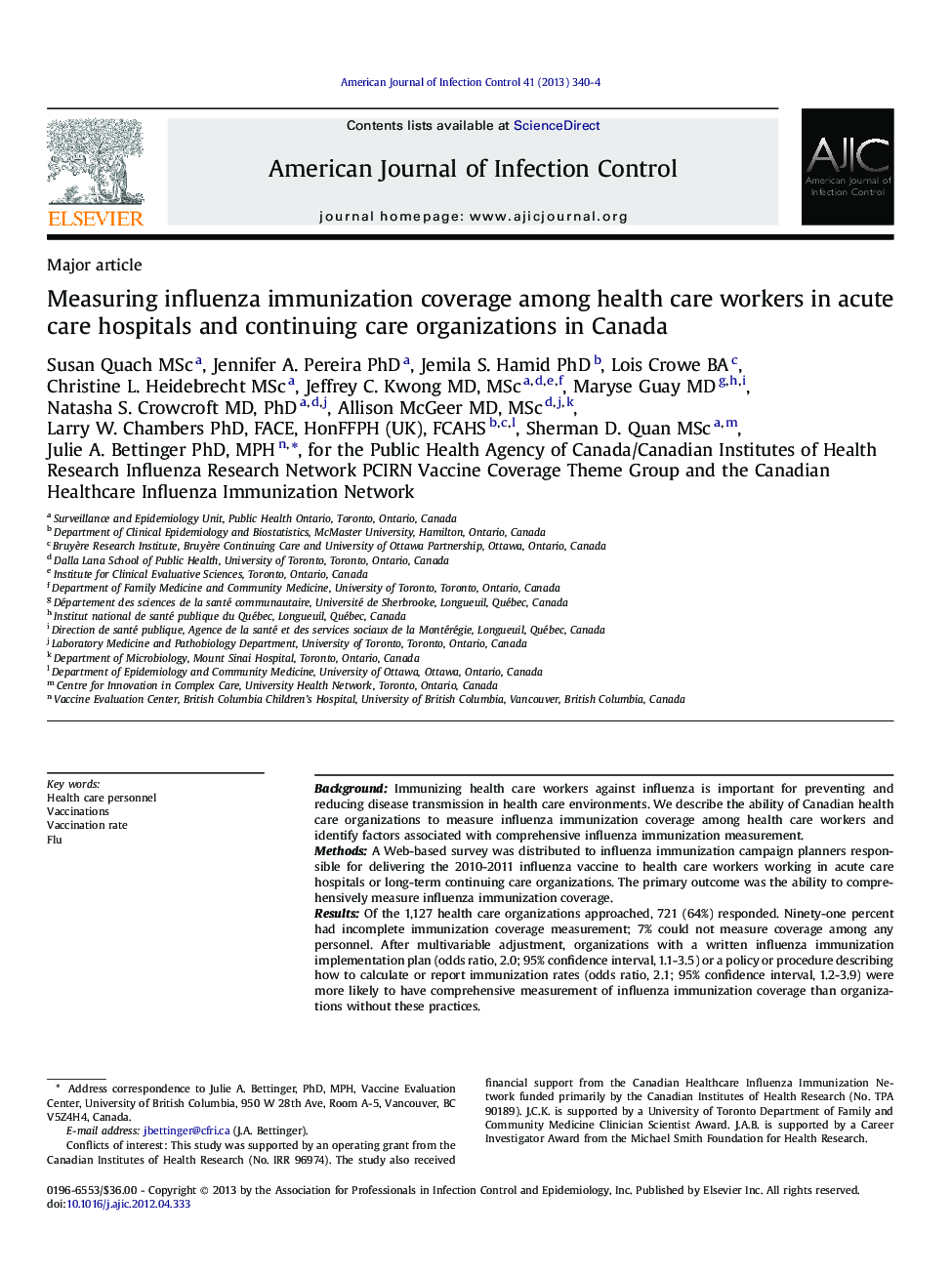| Article ID | Journal | Published Year | Pages | File Type |
|---|---|---|---|---|
| 2637465 | American Journal of Infection Control | 2013 | 5 Pages |
BackgroundImmunizing health care workers against influenza is important for preventing and reducing disease transmission in health care environments. We describe the ability of Canadian health care organizations to measure influenza immunization coverage among health care workers and identify factors associated with comprehensive influenza immunization measurement.MethodsA Web-based survey was distributed to influenza immunization campaign planners responsible for delivering the 2010-2011 influenza vaccine to health care workers working in acute care hospitals or long-term continuing care organizations. The primary outcome was the ability to comprehensively measure influenza immunization coverage.ResultsOf the 1,127 health care organizations approached, 721 (64%) responded. Ninety-one percent had incomplete immunization coverage measurement; 7% could not measure coverage among any personnel. After multivariable adjustment, organizations with a written influenza immunization implementation plan (odds ratio, 2.0; 95% confidence interval, 1.1-3.5) or a policy or procedure describing how to calculate or report immunization rates (odds ratio, 2.1; 95% confidence interval, 1.2-3.9) were more likely to have comprehensive measurement of influenza immunization coverage than organizations without these practices.ConclusionMost organizations demonstrated incomplete measurement of influenza immunization among health care workers. Given the use of influenza immunization coverage as a measure of quality of care, further work is needed to develop a standardized approach to improve its measurement.
